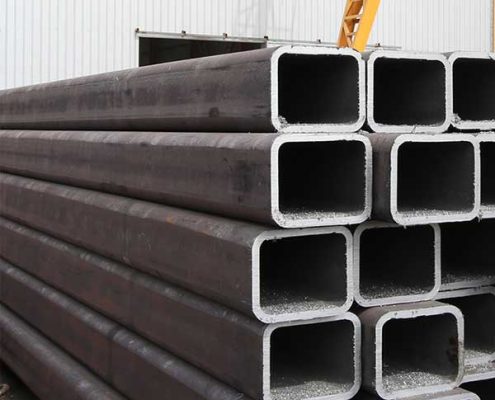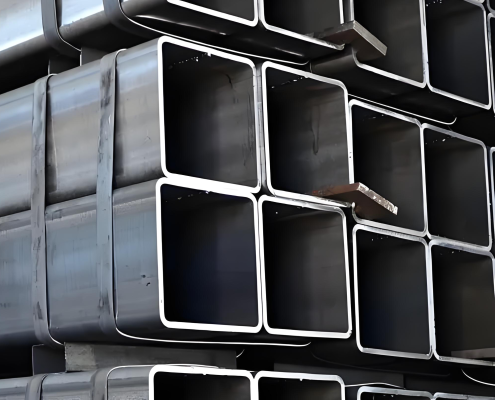Future Energy Steel provides steel structural tubing for piling, construction and engineering purposes, adhering to ASTM and EN standards. Their structural tubing includes ASTM A252 steel pipe piles and EN 10210-1 hot-finished structural hollow sections. These high-quality pipes are ideal for construction, machinery, transportation, aviation, and both onshore and offshore oil exploration. With a wide range of specifications, our structural tubing ensures cost-effective solutions for various industrial applications. Contact us at [email protected] for tailored solutions to meet your specific project needs.
FAQs
What is Structural Tubing?
What Are the Characteristics of Structural Tubing?
Shapes and Forms:
Square Tubes: Provide uniform strength in all directions and are easy to connect with other structural elements.
Rectangular Tubes: Offer greater strength along one axis and are commonly used in applications requiring flat surfaces.
Round Tubes: Ideal for applications requiring smooth contours and are often used in columns and frameworks.
Material Composition:
Typically made from carbon steel or alloy steel.
Can also be made from stainless steel for applications requiring corrosion resistance.
Manufacturing Process:
Welded Tubing: Made by forming steel sheets into a tube shape and welding the seam. It is more economical and widely used in many structural applications.
Seamless Tubing: Made by extruding a solid billet to form a tube without seams. It offers higher strength and uniformity.
Surface Finish:
Available in various finishes, including bare steel, painted, galvanized, or powder-coated, to enhance corrosion resistance and appearance.
Dimensional Precision:
Manufactured to strict dimensional tolerances for diameter, wall thickness, and length to ensure compatibility with structural components.
What Are the Applications of Structural Tubings?
Structural tubing is widely used in various industries due to its strength, versatility, and ease of fabrication. Here are some common applications:
Construction Industry:
Building Frameworks: Used as columns, beams, and trusses in the construction of buildings and bridges.
Supports and Braces: Provides support for temporary and permanent structures, such as scaffolding and braces.
Stadiums and Arenas: Used in the construction of large-span roofs and support structures.
Automotive Industry:
Vehicle Frames: Used in the construction of vehicle chassis and frames for increased strength and reduced weight.
Roll Cages: Provides safety in racing and off-road vehicles by protecting occupants in case of a rollover.
Manufacturing and Industrial Equipment:
Machinery Frames: Used in the construction of machinery and equipment frameworks for stability and support.
Conveyor Systems: Provides structure for conveyor belts and material handling systems.
Agricultural Equipment:
Farm Structures: Used in the construction of barns, greenhouses, and equipment sheds.
Equipment Frames: Provides support for agricultural machinery and implements.
Recreational Structures:
Playgrounds and Park Equipment: Used in the construction of playground structures, park benches, and shelters.
Sports Equipment: Provides structural support for gym equipment and sports facilities.
How Many Standards for Structural Tubings?
ASTM A500: Cold-Formed Welded and Seamless Carbon Steel Structural Tubing in Rounds and Shapes
ASTM A501: Hot-Formed Welded and Seamless Carbon Steel Structural Tubing
ASTM A513: Electric-Resistance-Welded Carbon and Alloy Steel Mechanical Tubing
ASTM A618: Hot-Formed Welded and Seamless High-Strength Low-Alloy Structural Tubing
ASTM A1085: Cold-Formed Welded Carbon Steel Hollow Structural Sections (HSS)
EN 10210-1: Hot-Finished Steel Structural Hollow Sections
EN 10219-1: Cold-Formed Welded Structural Hollow Sections
Is EN 10210 S355J0H/J2H Structural Hollow Section Suitable for Offshore Wind Turbine Support Structure Pipe Piles?
EN 10210 S355J0H/J2H structural hollow sections are indeed suitable for offshore wind turbine support structure pipe piles. Here’s why:
Material Properties:
- High Strength:
- S355J0H and S355J2H are high-strength structural steels with a minimum yield strength of 355 MPa, providing the necessary strength for supporting heavy loads typical in offshore wind turbine structures.
- Impact Resistance:
- S355J0H offers impact toughness at 0°C, while S355J2H offers improved impact toughness at -20°C, making them suitable for use in colder offshore environments where resistance to brittle fracture is critical.
- Weldability:
- Both grades have good weldability due to their low carbon content, which is essential for the fabrication and assembly of large structural components used in offshore wind turbines.
- Toughness:
- The ‘H’ in S355J0H and S355J2H indicates that these sections are hot-finished, which enhances their toughness and makes them suitable for dynamic and fatigue-loaded structures such as those found in offshore applications.
Suitability for Offshore Wind Turbine Support Structures:
- Corrosion Resistance:
- While the base material itself may not be inherently corrosion-resistant, it can be effectively protected with suitable coatings, such as the liquid epoxy coatings discussed earlier, to withstand the harsh marine environment.
- Load Bearing Capacity:
- The high strength and good toughness properties ensure that these hollow sections can bear the heavy loads and dynamic forces exerted by wind turbines, including wind forces, wave action, and the turbine’s weight.
- Structural Integrity:
- The material’s mechanical properties and the robustness of hot-finished hollow sections make them reliable for use in critical structural components, ensuring the long-term structural integrity of the support piles.
- Fabrication and Installation:
- The good weldability and machinability of S355J0H/J2H make these hollow sections suitable for fabrication and installation in the challenging conditions of offshore construction.
Standards and Compliance:
- EN 10210:
- The standard specifies technical delivery conditions for hot-finished hollow sections of non-alloy and fine-grain structural steels, ensuring consistent quality and performance.
- S355J0H/J2H Grades:
- Compliance with these grades ensures the material meets the necessary mechanical and impact toughness requirements for structural applications.
EN 10210 S355J0H/J2H structural hollow sections are suitable for offshore wind turbine support structure pipe piles due to their high strength, good impact resistance, excellent weldability, and suitability for dynamic and fatigue-loaded applications. Proper protective coatings and maintenance will ensure their durability and performance in the harsh marine environment typical of offshore wind farms.





